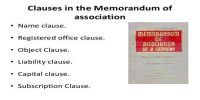Commercial Paper (CP)
Commercial Paper emerged as a source of short term finance in our country in the early nineties. Commercial paper is an unsecured promissory note issued by a firm to raise funds for a short period, varying from 90 days to 364 days. It is issued by one firm to other business firms, insurance companies, pension funds and banks. The amount raised by CP is generally very large. As the debt is totally unsecured, the firms having good credit rating can issue the Commercial Paper.
The advantages and disadvantages of a Commercial Paper are as follows:
Advantages
(i) A commercial paper is sold on an unsecured basis and does not contain any restrictive conditions;
(ii) As it is a freely transferable instrument, it has high liquidity;
(iii) It provides more funds compared to other sources. Generally, the cost of Commercial Paper to the issuing firm is lower than the cost of commercial bank loans;
(iv) Companies can park their excess funds in commercial paper thereby earning some good return on the same.
Disadvantages
(i) Only financially sound and highly rated firms can raise money through commercial papers. New and moderately rated firms are not in a position to raise funds by this method;
(ii) The size of money that can be raised through commercial paper is limited to the excess liquidity available with the suppliers of funds at a particular time;
(iii) Commercial paper is an impersonal method of financing. As such if a firm is not in a position to redeem its paper due to financial difficulties, extending the maturity of a Commercial Paper is not possible.















